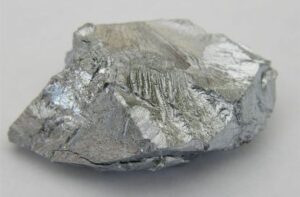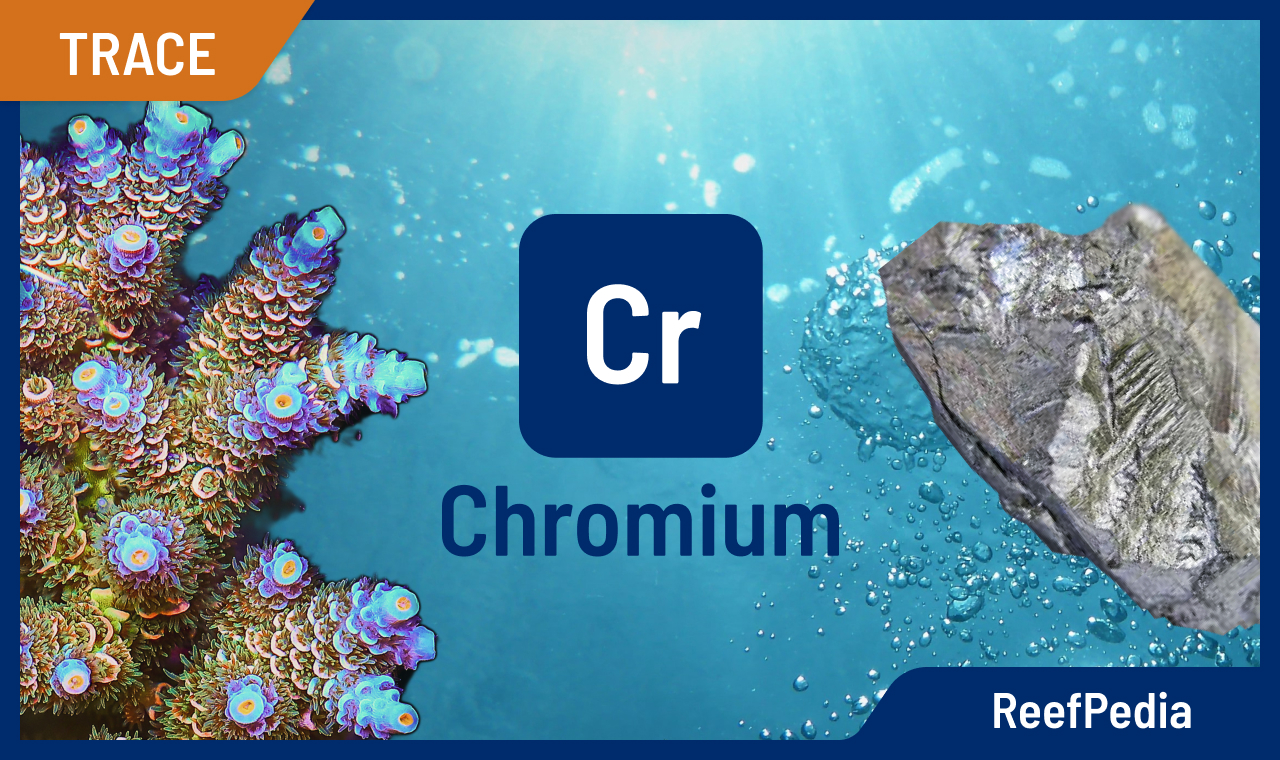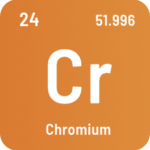 What is CHROMIUM (Cr)?
What is CHROMIUM (Cr)?
Chromium (Cr, Latin) in its pure form is a silvery grey metal with a blue sheen. The surface of chromium is usually covered by a layer of chromium oxide (an oxidised form of chromium) as a result of its reaction with oxygen in the air.
Chromium forms numerous chemical compounds in which it occurs in different oxidation levels (+II, +III, +VI), taking on different colours. In nature, this element occurs mainly in the form of minerals, such as chromite (FeCr2O4), crocoite (PbCrO4).
The importance of chromium in seawater
Chromium is an essential trace element in seawater, but is toxic in high concentrations. It tends to accumulate in the aquarium and then negatively affects the health of marine animals.
A stable form of chromium dissolved in oxygenated seawater is chromium on the +VI oxidation state (e.g. potassium chromate; K2CrO4). In addition to compounds in which chromium is on the +VI oxidation state, we find compounds in which chromium is on the +III oxidation state (chromium (VI) sulphate; Cr2(SO4)3). Oxygen alone dissolved in seawater oxidises Cr (+III) to Cr (+VI), this process is slow and the catalyst for this reaction is manganese oxide. Chromium at different oxidation levels differs in its properties, implying a difference in biological and toxicological behaviour.
The optimum level for chromium, which belongs to the group of trace elements in the marine aquarium, is 0-0.4 µg/l. For this element, special care must be taken not to exceed the recommended concentration levels.
The role of chromium in skeletal structure
The results of coral skeletal studies show that the skeleton of many corals is enriched with chromium. Maintaining high concentrations of chromium leads to irreversible damage to the skeleton.
The role of chromium in biological processes (metabolic pathways)
 Chromium is present in the active centres of many enzymes and is used by corals to form enzymes involved in fat metabolism.
Chromium is present in the active centres of many enzymes and is used by corals to form enzymes involved in fat metabolism.
The effect of high chromium concentrations on chlorophyll content and the activity of enzymes involved in apoptosis (a natural biological process programmed and controlled by the destruction of the body’s own cells in a multicellular organism) was also investigated. It’s been observed that elevated chromium causes stress in corals and inhibits enzymes of energy metabolism and reduces chlorophyll.
Risks of deficiency and excess of chromium in seawater
Low chromium levels reduce the growth rate of corals and the clarity of their colouration.
High levels of chromium in seawater can become toxic to animals. Whether chromium poses a risk depends largely on the type of chemical compound containing chromium in its structure. Most chromium compounds are not soluble in water and therefore chromium tends to accumulate (build up) as particulate matter. Soluble chromium compounds come from a variety of sources and become hazardous in excess.
How do I protect my aquarium?
Check the Chromium content regularly and keep it at the right level. We recommend that you keep chromium at a level of 0.1- 0.4 μg/L, with the optimum value we recommend being 0.2 μg/L. Keeping Chromium in seawater at the right level ensures healthy animals and beautiful colouration.
The most accurate and reliable method for the determination of Chromium is the ICP-OES analysis. The Inductively Coupled Plasma Optical Emission Spectrometry (ICP-OES) technique is the most accurate analytical method for analysing the elemental composition of seawater.
Indicators of abnormal chromium levels in marine aquariums
Deficiency:
- Poor skeletal growth
- Pale colours
Recommendations
In order to ensure adequate chromium levels in your aquarium you should test chromium regularly and ensure that the levels are correct.
If the chromium level is above 0.4 µg/l, we speak of an overdose. The most common reasons for exceeding the recommended chromium level:
- salt,
- excessive doses of administered fluids,
- cement,
- plastic elements,
- metal components in RO systems,
- pump impellers.
Find and eliminate the cause of the problem and lower the value of this parameter in the water. Perform up to 6 water changes. It is recommended to change about 15% of the aquarium water volume during each water change until the recommended value of this parameter is reached. The water prepared for the change must have the correct target salinity level. Use salts with the correct parameters and composition suitable for the ICP test.
If the Chromium level is below 0.1 µg/l, we recommend using products containing this element to compensate. In order to ensure constant chromium levels in marine aquaria, we recommend systematic supplementation of this element depending on the coral population in your aquarium.
About author

Magdalena Metzler
Privately, I am a mother and a lover of nature and sport. My main interest is quantum chemistry, which hides a whole lot of unsolved mysteries and connections, which is extremely exciting from a scientific point of view.
In my scientific career, I have conducted international projects focused on innovative solutions for many branches of business, e.g. automotive, construction, and now, of course, marine aquaristics.
Working at Reef Factory gave me a passion for marine aquaristics, which I can develop every day, building a chemistry department and creating products that will help aquarists take care of tanks and ensure the highest safety of animals.
One of the most exciting memories of working at Reef Factory is the commissioning of the ICP-OES spectrometer, which analyzes the elemental composition of seawater. The method of analysis in ICP is based on an analytical technique, which is a combination of my passion for quantum chemistry and marine aquaristics.
I hope you find my articles on ReefPedia interesting and helpful! Happy reading :))
Magda


 What is CHROMIUM (Cr)?
What is CHROMIUM (Cr)?